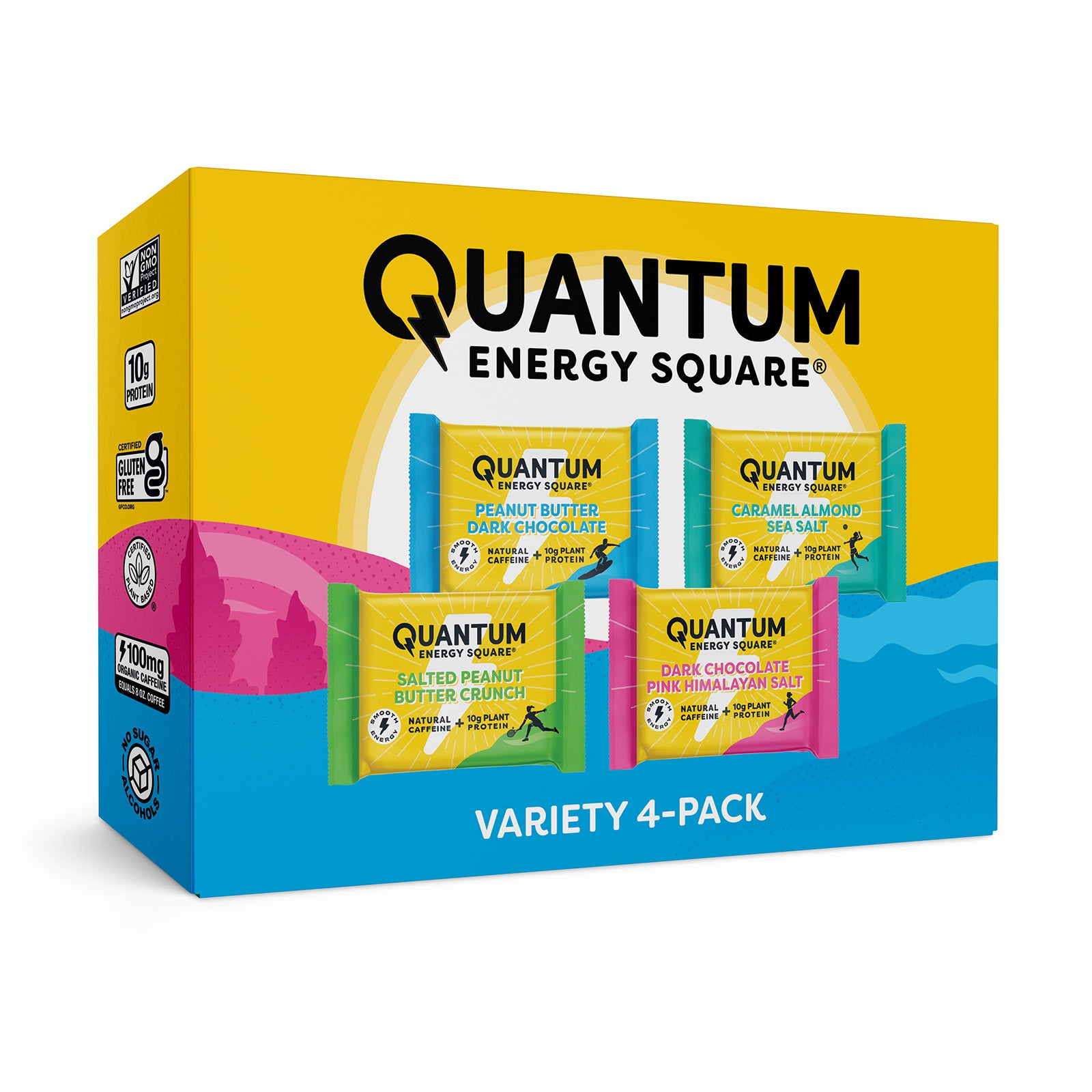While it’s always been a hit with nine-to-fivers, caffeine is currently really taking off with athletes, too: runners and the like. It’s not just about “the best part of waking up,” it’s about focus, performance, mental focus and acuity, and more.
But did you know that not all caffeine is created equally? And that the nutrients you pair alongside caffeine can impact its absorption? It’s true. Here’s what you need to know about different types of caffeine and how to maximize benefits from its consumption.
Wait, there are different types of caffeine?
Yep. Just like there are different kinds of alcohol, aspirin, kale, and cake, there are different kinds of caffeine. Primarily, though, just two: natural and synthetic.
Natural caffeine, like that from the organic green coffee in Quantum Energy Squares (and your daily — twice daily? thrice daily? — latte), is derived from plants. Synthetic caffeine, however, like what you’ll find in most sodas and energy drinks, is manufactured in a lab by a chemist rather than a cook.
They both provide energy, so why should you care, right? Here’s why: while the chemical structure of natural and synthetic caffeine is similar, natural caffeine from tea, coffee and chocolate has additional beneficial nutrients, like antioxidants and phytochemicals, whereas synthetic does not.
And while there’s not yet any research linking synthetic caffeine on its own to negative health outcomes, there are variations in manufacturing and in the quality of ingredients and processes used to produce synthetic caffeine (and any lab-made additive) that raise questions. (On a related note, there’s plenty of research available on the negative health outcomes of some of the ingredients that come alongside synthetic caffeine: high-fructose corn syrup in sodas and energy drinks, for example.)
Now, how do I avoid the caffeine energy crash?
There’s nothing like a morning cup of coffee, and the boost of energy that comes with. Sadly, in most cases, a few hours later, we need another boost, and then another, and we’re getting another coffee, or a sugary snack, or something else to help us “re-jumpstart.” It doesn’t have to be this way.
When caffeine is combined with macronutrients, especially fat and protein, we can slow absorption and create a source of slow-burn energy. “Wrapping” natural caffeine in natural macros means your body has to take more time to process, a slow process that helps delay the absorption and release of “the good stuff”: the carbs, the protein, the caffeine.
Put simply, when you consume protein, fats, and complex carbs along with caffeine, utilization of nutrients (yes, we’re including caffeine) is spread over a longer period of time, which means you are less likely to notice sharp peaks and valleys in energy levels over a longer period of time.
Quantum Energy Squares have been purposefully created with this foundation in mind. It’s not just a pick-me-up energy bar: it’s a keep-me-up, hold-me-up, support-energy-and-wellness-over-a-sustained-period-of-time bar.
About the Author: Kelsey Hampton MS, CSSD, RDN, LD
Kelsey is a Texas-based dietitian who specializes in sports nutrition. As an athlete herself, Kelsey has a strong interest in how nutrition can influence all areas of sports performance and works with clients to help them use nutrition to optimize their training, racing and health. In addition to working in private practice with active individuals of all types and ages, Kelsey is also a professor of Nutrition at Southern Methodist University in Dallas and works with many of the student athletes on a 1:1 basis. Kelsey is a former collegiate swimmer who now runs and lifts weights for exercise, and enjoys cooking and creating new recipes.





